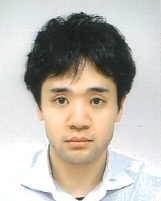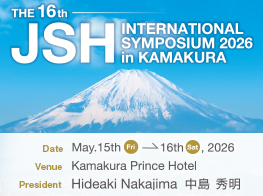
名前:綿貫 慎太郎【慶應義塾大学医学部 血液内科】
発表形式:e-Poster
Title:
High energy demand upregulates glycolytic ATP production in hematopoietic stem cells via AMPK/PFKFB3 axis
Authors:
Shintaro Watanuki* 1,2, Kobayashi Hiroshi1, Shinichiro Okamoto2, Keiyo Takubo1
Affiliations:
1. Department of Stem Cell Biology, National Center for Global Health and Medicine, Tokyo, Japan
2. Division of Hematology, Keio University, Tokyo, Japan
Abstract:
Background: Metabolic dynamics control the fate of hematopoietic stem and progenitor cells (HSPCs), whether they proliferate, differentiate, or keep quiescence in cell cycle. Despite its importance, the metabolic difference between the most primitive hematopoietic stem cells (HSCs) and progenitors is yet unclear due to paucity of methods that can quantitatively measure metabolic profile. For instance, to what extent each of the HSPC fraction depends on glycolysis and mitochondrial oxidative phosphorylation (OXPHOS) is still an open question.
Aims: To quantify ATP concentration within the HSPC fraction with high temporal resolution at single cell level thereby examining how HSPCs adapt to nutrient environment, cell-cycle status and metabolic perturbation.
Methods: We took advantage of FRET-based ATP biosensor GO-ATeam2-knock-in mice and performed time-course analysis for FRET value.
Results: We first examined the dependence on glycolysis and OXPHOS within the HSPC fraction by measuring ATP concentration following pharmacological inhibition under a glucose-free condition. Inhibition of glycolysis by 2-deoxy-D-glucose (2-DG) resulted in rapid reduction of ATP concentration in Lineage-negative c-Kit+ Sca-1- myeloid progenitors while HSCs and common lymphoid progenitors exhibited slower ATP reduction rate. Inhibition of OXPHOS by oligomycin, by contrast, led to rapid decrease in ATP concentration either in HSCs or in progenitors, contrary to the previous notion that HSCs depend more on glycolysis than progenitors. Among the HSPC fraction, however, only HSCs restored ATP production by adding glucose upon OXPHOS inhibition, suggesting that HSCs but not progenitors plastically accelerate glycolysis to compensate for decrease in OXPHOS-dependent ATP production. We then tested whether the glycolytic acceleration could occur in a situation where ATP requirements have increased in vivo. In 5-fluorouracil (5-FU) treated model, HSCs at day 6 after 5-FU administration showed reduction in ATP concentration accompanied by loss of quiescence. In this situation, HSCs showed greater decrease in ATP by 2-DG treatment than that of the PBS administered group. These results indicate that stressed or cycling HSCs switches accelerate glycolytic ATP production as a result of the increased ATP demand. In order to elucidate the underlying mechanism by which HSCs accelerate glycolysis, we searched for chemical compounds that inhibit glycolytic compensation in HSCs upon OXPHOS inhibition. Among compounds tested, inhibitors for AMPK or PFKFB3 rapidly reduced ATP concentration in oligomycin-treated HSCs even under sufficient amount of glucose. However, on the other hand, these two compounds are ineffective in the presence of glucose alone, suggesting that the significance of the AMPK / PFKFB3 axis in the steady state is limited. When a similar experiment was performed in the 5-FU treated model, ATP decreased in the 5-FU treated group by administration of PFKFB3 inhibitor compared to the PBS-administered group, but no difference was detected in AMPK inhibitor administration other than the base ATP concentration. Therefore, HSCs in the growth phase plastically accelerate glycolysis in a PFKFB3-dependent manner.
Summary/Conclusion:HSCs uniquely possess metabolic plasticity that upregulates the glycolytic ATP production through an AMPK / PFKFB3 axis in a demand-driven manner.



